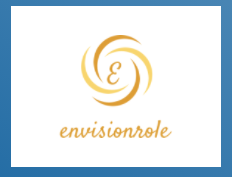Identify the quality of the site for link building: –
Reduce risks in the scope of link building.
Learn the key elements to evaluate to determine the quality of a potential link partner’s site.
Link building covers the whole gamut, from strategy to analysis and reporting.
Google Penguin specifically focused on link schemes, so link creators need to be aware of what types of links are risky.
Link lead evaluation: key elements:
When reviewing websites for link building, keep the following items in mind:
- Content: written and visual content for blogs, main site content, etc.
- Administrator: Do have advertising and what are the policies?
- Link Profile: What do the links pointing to the site look like?
- Authorship: Who is responsible for the main content and supporting content?
- Reputation: Does the authorship have a reputation?
- Technical: How do users find and interact with the content/site?
Using this framework to evaluate prospects, help a B2C eCommerce customer increase their monthly organic traffic.
Over the years, Google and its representatives have confirmed the negative impact of link schemes on search rankings.
Google offers several tips on the subject:
- Google Search Console help documentation on link schemes.
- The Google Search Quality Raters’ Guidelines.
- Google representatives.
Relying on advice from Google can pose challenges for the link building program.
For example, Google’s guidelines on link schemes are ambiguous.
But Google can’t interpret intent, at least when it comes to links.
Google’s search quality rater guidelines aren’t necessarily meant to guide link building,
but they do give a good idea of what Google thinks is relevant in terms of content quality.
Metrics vs. Quality:
Identifying metrics and quality can help shape link building success.
Metrics:
Aira’s State of Link Building survey reports on how people measure and report link building activity.
These metrics include some of the proprietary metrics from top SEO tools, including:
- Moz domain authority.
- Ahrefs domain rating.
- Moz page authority.
- Majestic’s flow of trust.
- SEMrush authority score.
- Majestic dating stream.
- Verve link score.
Looking at these metrics is not a substitute for the own manual research.
A much deeper analysis of the outlook is also needed.
Quality:
The Google Search Quality Raters guidelines have a section for the overall page quality rating that can also be adopted.
This system can help cover
- Purpose of the content.
- Content depth.
- Credible sources.
Due to the lack of comprehensive quality metrics for link building, PureGrade, the quality of a site, and the likelihood of having a positive impact on organic ranking.
Scoring is based on automatic footprints and a manual review of a site’s content.
To analyze a site: Keys to a great evaluation.
To evaluate potential binding partners, it is essential to consider the following elements:
- Content
- Administration
- Link profile
- Literary fatherhood
- Reputation
- Technical
To go through the process, be sure to:
- Weight each element: some aspects of the site are more important than others.
- Create a footprint, not just an element – examine multiple elements and then decide whether the quality of the site.
These are the key aspects to consider during the evaluation:
Content:
- Trade Links: Links to money pages not tagged with nofollow or sponsor.
- Navigation: Is it too general for a blog?
- No-no Keywords: Keywords related to gambling, pornography, and payroll loans.
- Frequency – Posts are infrequent or old.
Administration:
- About us: links to money pages.
- Administration pages: advertising, guest posts.
- Information: telephone, address, email.
For this component, beware of websites that directly advertise “dofollow” links in guest posts.
Google claims that it can algorithmically solve these kinds of link buying schemes.
Avoid these websites at all costs.
Link profile:
- Excessive links: too many links pointing to one page.
- Low authority – use DA or DR to solve this.
- Non-relevant links – Links are meaningless to the page.
Literary fatherhood:
- Names & Bylines: Is the byline set to admin or site name?
- Author’s page: No information about the author?
- Foreigner: Is the author from the destination country or not?
Reputation:
- Presence: Does the website have a presence on social media?
- Next: What types of accounts does the brand follow?
- Commitment: Do have a commitment?
Technical:
- Indexed: Does the website exist in the Google index with more than the home page?
- Geo: What is the focus of the audience’s country?
- Interaction with the page: does the site have ads, layout, and links within a page?
To Identify Site Quality for Link Building
Take a look at SlideShare.
- To identify the quality of the site for link building from the Search Engine Journal.
More resources:
- E-A-T and Link Building: A Guide to Evaluating Prospects.
- E-A-T and Link Building (PureLinq)
- Ecommerce Marketing: The Definitive Guide.
To scale and grow the business technical SEO strategy:
Trying to scale SEO strategies but having trouble keeping up.
